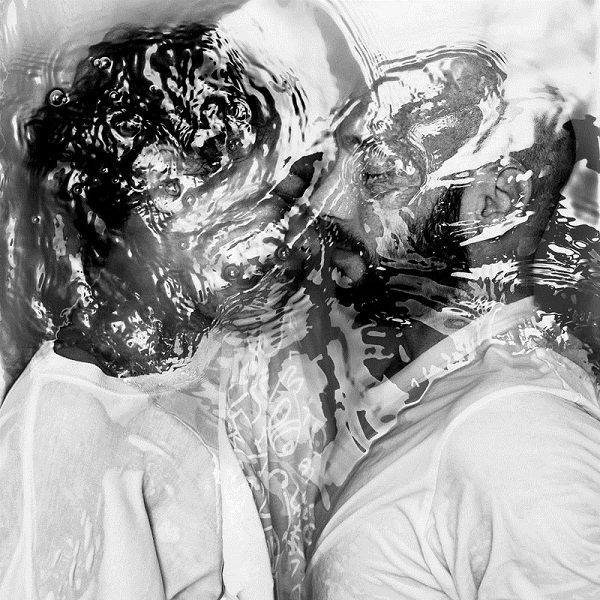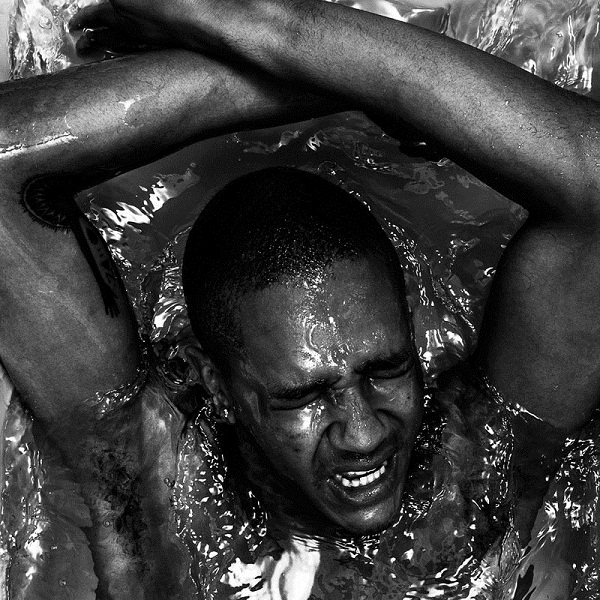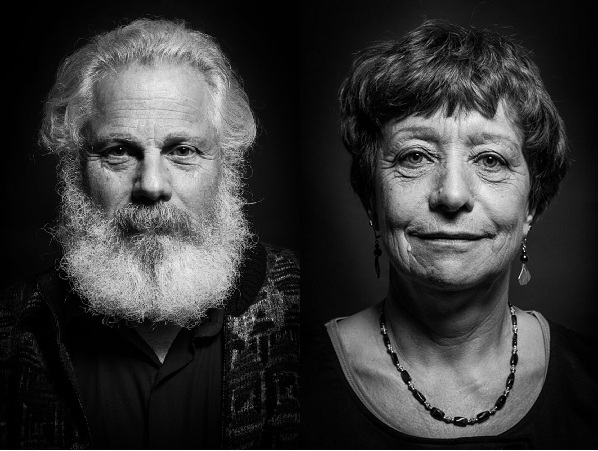Artist of the Week 10/3-10/9: Alban Grosdidier Drowns And Resuscitates Emotions In His Work
GALO: In your collection, there’s a photograph of a man emerging from the water, his hands crossed over his head and painstaking struggle on his face. The image is one that becomes engrained in the mind because of the liberating yet, anxious look on his face. Was this what you were intending to capture in this moment?
AG: I put my models in water waiting to see what would happen, which ones would be easy to direct and which ones would need to be left intuitive. This is one that was really spontaneous: Cédric, the model, was simply choking with water. I took the shot and the result felt great and consistent with what I was trying to say, so I kept it. It’s actually my favorite of the series, for its violence.
In addition to that, I’d like to say that you don’t have to build every single pixel of your image. You can put a conceptual and visual frame to a project, make it happen, let it evolve by itself and just be there to harvest the result.
I actually took around 600 pictures with eight models that day and kept only 10 because they were consistent with my idea and visually interesting. Some might say it’s a lot of useless pictures, but I believe selection is one of the biggest parts of the project. If I had chosen to keep 50 photos, this series would have made no sense due to at least half of it being irrelevant.
Then why 600 photos, [you ask]? As I said, this project, once the models were in the water, had somehow [taken] its own dynamic, which I could try to influence but on which I did not have all the control. I could not know how water would react to light or how my model would react to water at every moment and for every picture. Six hundred pictures were what the project needed to be able to live by itself before I got back control of it by making my selection.
GALO: The first portrait was showcased on the Seine River in France in January 2012, while the second part of the series was presented along the Canal Saint Martin in July 2012. Both waterways have significance in the art world, inspiring artists such as Claude Monet and Alfred Sisley. Why did you choose these locations to display Drowning?
AG: These are iconic Parisian waterways. Paris is an iconic city, cities are the theme of my series, my series shows water, and these are iconic Parisian waterways. It just made sense; it’s kind of a rhetorical loop.

Alban Grosdidier’s “Drowning” series. Photo Credit: Alban Grosdidier.
GALO: A photograph of a man and woman facing each other peacefully under water is your only picture depicting what appears to be a couple; her head is tilted affectionately toward his and it appears as though they are seconds away from a kiss. Were they complete strangers? And how difficult was it to capture the passion between two subjects who had to interact with each other?
AG: They’re not strangers; they have been a couple for years. They are not about to kiss; if you look closely at her [expression], her mouth and eyes, you will see she is under a lot of stress. This model was actually a bit phobic about water, which I did not know, but she decided to get in anyway. Under that amount of stress, she was naturally getting close to her lover [in order] for him to protect her. I’m pretty sure it was an unconscious reflex, and that’s the leaning you see.
As for the difficulty, yes, this was one of the toughest. To get to capture the alchemy going on between [the couple], we had to try different positions, the water needed to reflect just enough light so it would visually weigh on them but not hide them too much, and I had to get the shot right at the moment where their expressions would both be right, intense and readable.
GALO: The images are breathtaking, but the subjects appear to be very much in control of their breathing despite being submerged in water. What was the process like of taking these portraits and how hard was it for the subjects to maintain these poses?
AG: Actually, two pictures were taken while [the] models were choking. One of them even vomited a little bit of water less than 1/10 of a second after the photo. So no, they definitely were not in control, even if some [appeared to be]. But I did not want them to maintain the poses. Instead, I asked them to perform a short sequence of movements and would capture several steps into it. This allowed keeping a dynamic, both for the model and the water texture.

Alban Grosdidier’s “Drowning” series. Photo Credit: Alban Grosdidier.
GALO: Your collection People Are Watching, featured over a dozen portraits of individuals, who somehow have the same unflinching stare. This collection intended to respond to an abundance of campaign posters during the 2012 French Presidential campaign, essentially to hold politicians accountable for their actions. What inspired you to create this politically driven work?
AG: It was a class project. We were given the chance to work either on [the] presidential campaign, [the] contestation movements, or [the] Greek republic. Before the brief was over, I knew what I wanted to do. At that point, political debate was pretty much at point zero with a lot of futile facts relayed by the media, which politicians love because it allows them to be elected instead of their opponent and it shifts the focus point from their program to their personality and charisma. This project was a way to remind them [that] they are only employees of the people.
GALO: You’re a photographer, graphic designer, and you mix elements of typography and editorial content to create your work. Which medium do you prefer to express yourself through and how do you decide which medium to use for a particular piece?
AG: I’m naturally attracted to photography because it’s the medium with which I feel the most comfortable and it’s quite flexible. However, sometimes it is not relevant to a project or another medium would be better, would make more sense, or be more graphic or give more impact. I think it takes experience to know what you can or can’t do with a certain medium and to evaluate which one is the best for you in a certain situation. Actually, that’s a huge part of the job for creative directors and art directors.

Alban Grosdidier’s “People Are Watching You” series. Photo Credit: Alban Grosdidier.
GALO: What type of artwork are you working on now and do you ever plan to have an exhibit here in America?
AG: Right now, I’m assisting an experienced photographer, so I’m not producing anything for myself. Sometimes, it’s okay to interrupt your head a bit and try to experience something else. At least, I know I have learned a lot in those past days. But I already have another personal project about painting planned for September, plus a contract job and I’ve been asked to write a philosophical essay through the prism of my drowning series; that, plus getting back to school in late September. As you see, I don’t like to stay static.
I’d love to exhibit in America, or anywhere else, but I don’t have the money it takes to make it happen and I don’t feel like my production is big enough yet to go from doors to doors and ask for a financial backing, so it will have to wait. But if anybody has an offer to make, I’m definitely listening…
Portions of this interview were conducted in mid-August.

